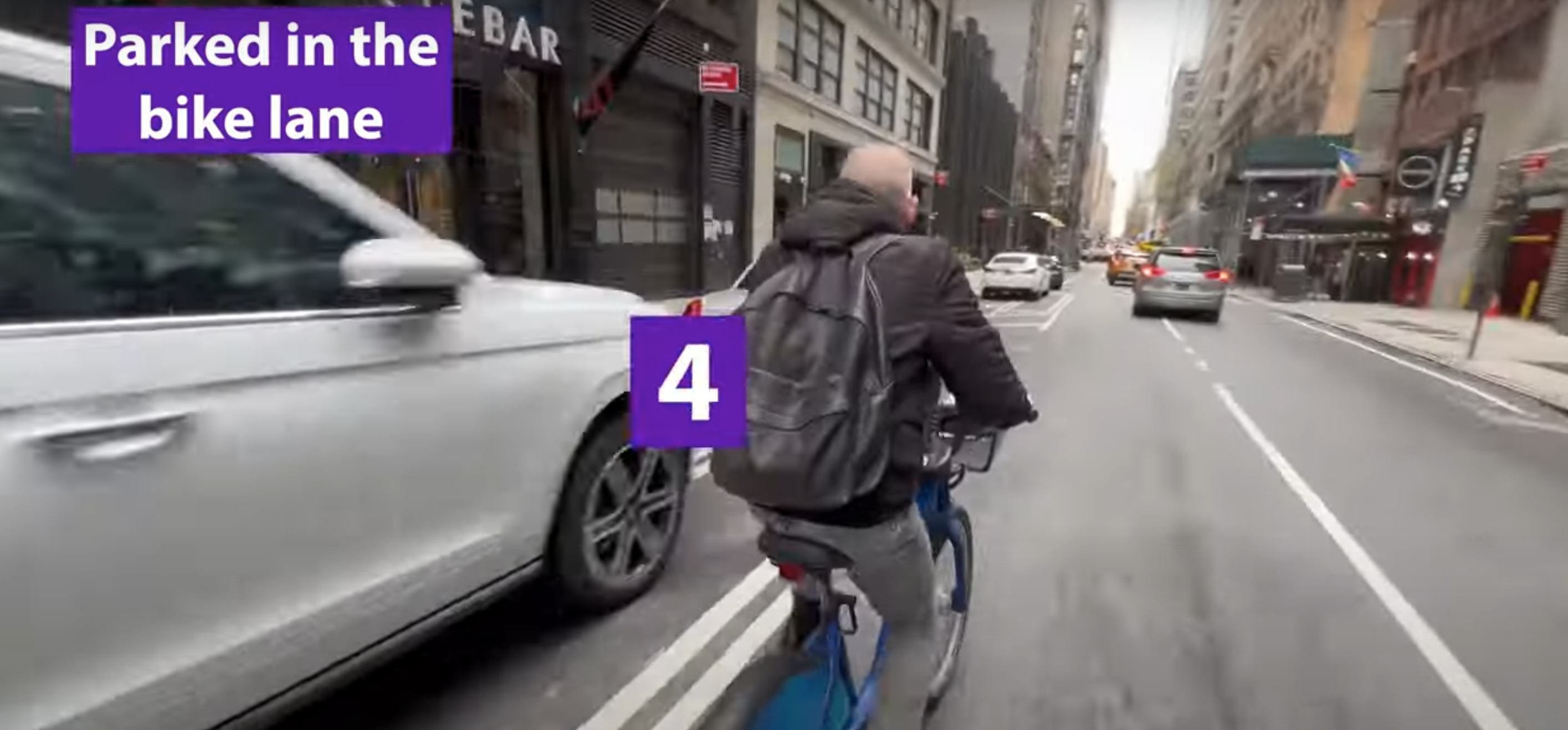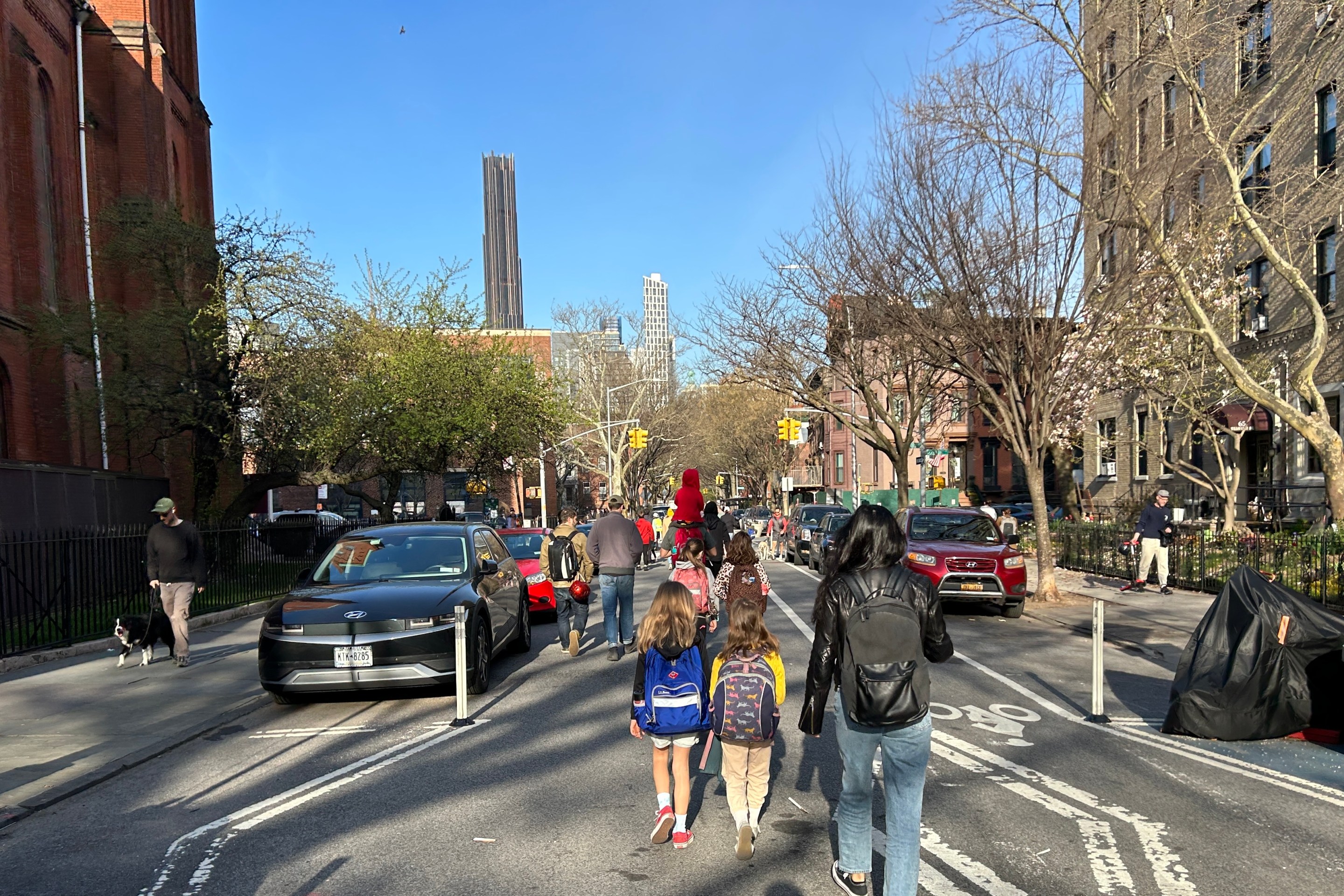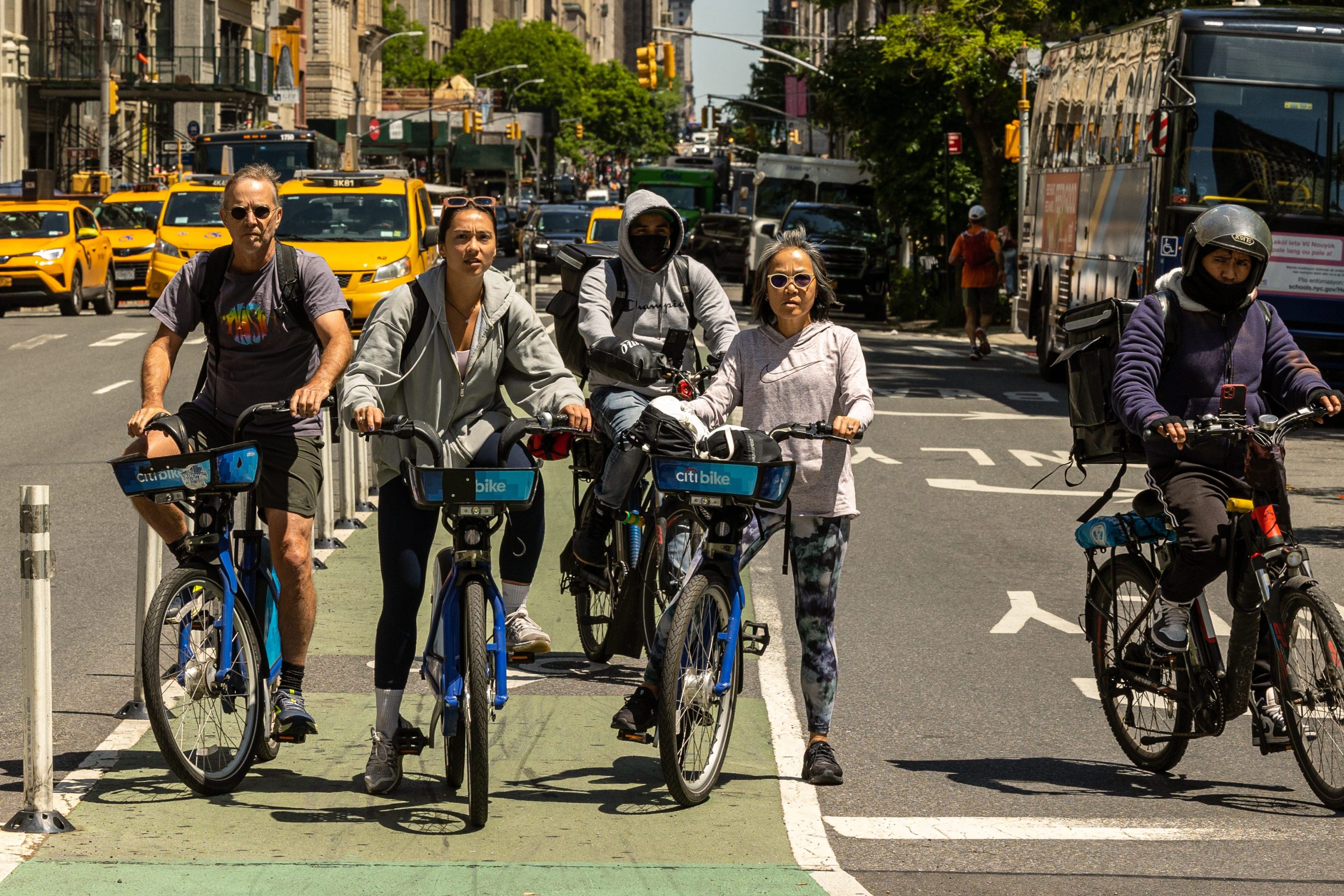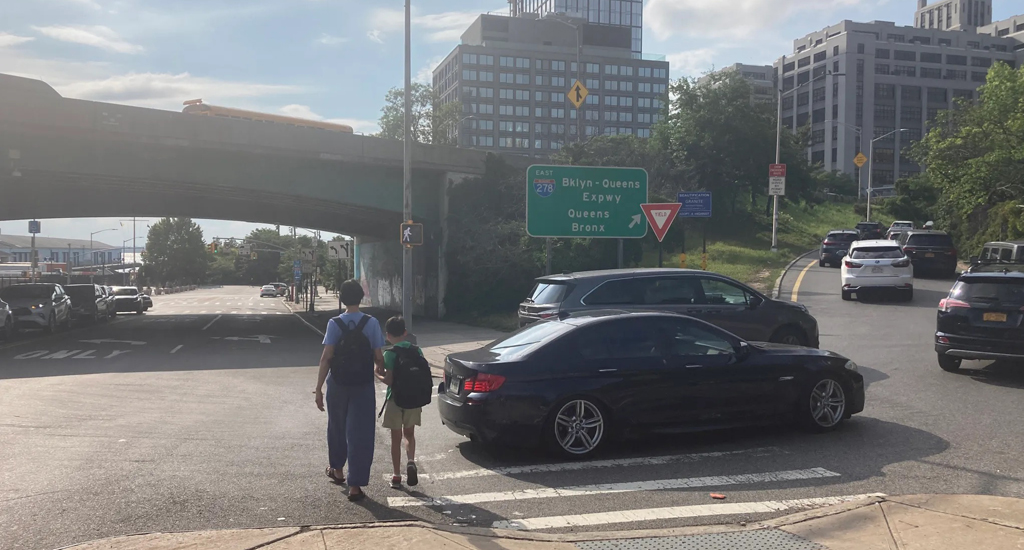I had to pull this Marcia Kramer segment out of the headline stack and post it, because you've got to see it to believe it.
Earlier this week, CBS2's chief political correspondent went down to Borough Park to expose the pedestrian refuge threat. Intro: "The Department of Transportation has struck again." With its outlandish Safe Streets for Seniors program!
Safe Streets for Seniors targets sections of the city with high populations of senior citizens and high rates of pedestrian injuries. It's linked to a broader citywide initiative called Age-Friendly NYC. When Mayor Bloomberg, DOT and the Department for the Aging launched the program in 2008, they aimed to improve pedestrian safety for seniors in 25 neighborhoods. Borough Park is one of those focus areas, and the pedestrian refuges DOT installed on Fort Hamilton Parkway are designed to make it safer to cross the street.
Marcia Kramer doesn't say a word about that in her report. She refrains from acknowledging, in general, that people walk.
She does say that pedestrian refuges, still under construction, are frowned upon by local rabbis, slow down fire trucks, and get in the way of ambulances. These refuges are also, apparently, killing local businesses and forcing delivery vehicles to park on the sidewalk. Take Kramer's word for it.
The rabbis seem to be mainly concerned about emergency vehicle response. While to my eye there's no evidence in this video that the refuges are causing fire trucks to lose time or making ambulance drivers engage in maneuvers that they don't already use to negotiate traffic-clogged streets, it's worth taking a closer look at these claims, because they're so common among traffic calming foes.
First of all, FDNY recently embarked on its own internal traffic calming project. Because the 442 trucks in the department's fleet are involved in several hundred major crashes every year -- 684 in 2008 -- FDNY started testing out the policy of driving normally when responding to less urgent calls. FDNY chief Salvatore Cassano told the Times:
“Often, responding to a call can be even more dangerous for our members than the incident itself,” Mr. Cassano added. “We want to minimize the danger this poses to firefighters and the public.”
So FDNY recognizes that rounding corners at high speed in huge trucks can pose risks that outweigh the benefits of responding a few seconds earlier.
Here's how Traffic author Tom Vanderbilt has described the trade-offs of designing roads to maximize fire response times:
...the risk of dying in a fire in the U.S. is roughly the same as drowning: In one year, 1 in 88,000, and, over a lifetime, 1 in 1100. The risk of dying in a car crash, according to the article, is 1 out of 6500 in a year. The risk of being killed while being a pedestrian? “A one-year risk of one in 48,500 and a lifetime risk of one in 625.”
Designing roads to meet some supposed emergency response criteria, for that dramatic last-second rescue, actually helps raise the risk of dying in a much more common way: In traffic.
And while Kramer sees an ambulance swerve around a stopped car into an oncoming lane and blames the pedestrian refuge, maybe we ought to take a closer look at the driver's decision. A growing body of research suggests that driving emergency vehicles at high speeds may not appreciably benefit patients. Slate reported earlier this year on a recent study in the Annals of Emergency Medicine, which found no correlation between patient mortality rates and the time it took to get patients to the hospital:
The authors studied more than 3,000 trauma patients—those with low blood pressures from bleeding, head injuries, and difficulty breathing—and looked at various time intervals after a 9-1-1 call. The times were compared with outcomes for the patients in the hospital. The result: shorter intervals did not appear to improve survival.
Update: Local City Council Member Brad Lander has a piece in the neighborhood paper Hamodia today supporting the Safe Streets for Seniors project in Borough Park. It's not online but here's an excerpt about the need for this project:
On December 31st, 2009, a 74- year-old woman was hit by a truck and killed as she crossed Fort Hamilton Parkway at 49th Street in Boro Park. In April of this year, a 55-year-old person was killed crossing Fort Hamilton just a few blocks away. Nearby, several other pedestrians have been struck by cars. In 2008, when a car collision at Fort Hamilton and 44th Street killed two people, a local resident called it the “corner of death.”
So when the NYC Department of Transportation came out to Community Board 12 back in June to tell us about their plans to install a few pedestrian islands at key intersections along Fort Hamilton Parkway — as part of their “Safe Routes for Seniors” program — I thought it made sense to try to save the next senior citizen from getting killed. Boro Park has a high concentration of seniors, and we’ve seen too many of them hit by cars in recent years.




